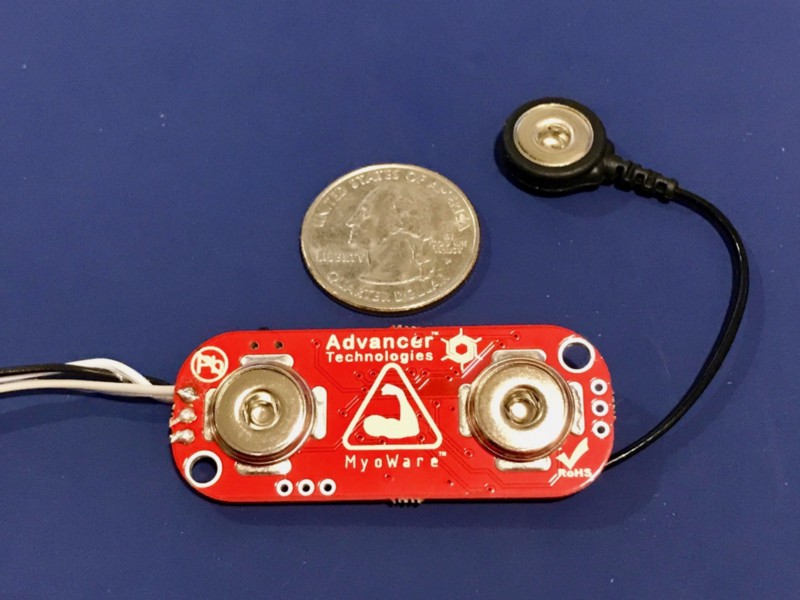What with wearable tech, haptic feedback, implantable devices, and prosthetic limbs, the boundary between man and machine is getting harder and harder to discern. If you’re going to hack in this space, you’re going to need to know a little about electromyography, or the technique of sensing the electrical signals which make muscles fire. This handy tutorial on using an Arduino to capture EMG signals might be just the thing.
In an article written mainly as a tutorial to other physiatrists, [Dr. George Marzloff] covers some ground that will seem very basic to the seasoned hacker, but there are still valuable tidbits there. His tutorial build centers around a MyoWare Muscle Sensor and an Arduino Uno. The muscle sensor has snap connectors for three foam electrodes of the type used for electrocardiography, and outputs a rectified and integrated waveform that represents the envelope of the electrical signal traveling to a muscle. [Dr. Marzloff]’s simple sketch just reads the analog output of the sensor and lights an LED if it detects a muscle contraction, but the sky’s the limit once you have the basic EMG interface. Prosthetic limbs, wearable devices, diagnostic tools, virtual reality — the possibilities are endless.
We’ve seen a few EMG interfaces before, mainly of the homebrew type like this audio recorder recruited for EMG measurements. And be sure to check out [Bil Herd]’s in-depth discussion of digging EMG signals out of the noise.

















There are electrical safety issues when connecting electrodes to your body. The Arduino and the computer to which it is connected should be isolated from the mains. A cheap wall wart is not a medical safe power supply.
For a more in depth discussion check out Bruce Land’s lectures on youtube https://www.youtube.com/watch?v=thCFMeB8pHM&list=PLKcjQ_UFkrd7zbPHRkDpB7i113wDG_Rb3
Nice, thanks
These could be used to create a super cheap alternative to the very expensive devices that people who suffer from epileptic seizures.
People with epilepsy can have no warning (more so in uncontrolled cases) that they’re about to have a seizure, and they’re unable to control or know what’s happening to them while the seizure happens, and for sometime afterwards.
Muscles tend to contract rhythmically for upto 5 minutes while having a seizure. Sometimes, people don’t even know they’ve had one if they’re sitting or laying down (ie asleep) as they fall unconscious afterwards and only awake with a very bad headache.
Something like these devices could be used to log how long the seizure lasts for, when they’re happening. A very basic requirement for having neurologists an insight to helping understand and remedy the seizures.
If nothing else, it could be used to provide alerts for people who are alone for what ever reason and have a seizure.
Checkout this project on IO:
https://hackaday.io/project/5809-biopotential-signal-library
He’s using a microcontroller to filter the noise and acquire the signals.
Technology has advanced!
I built this EMG circuit back in 2003:
http://www.wolftronix.com/biotail/images/img_0506.jpg
It controlled an animatronic tail, (sensors on your legs):
http://www.wolftronix.com/biotail/biotail.htm